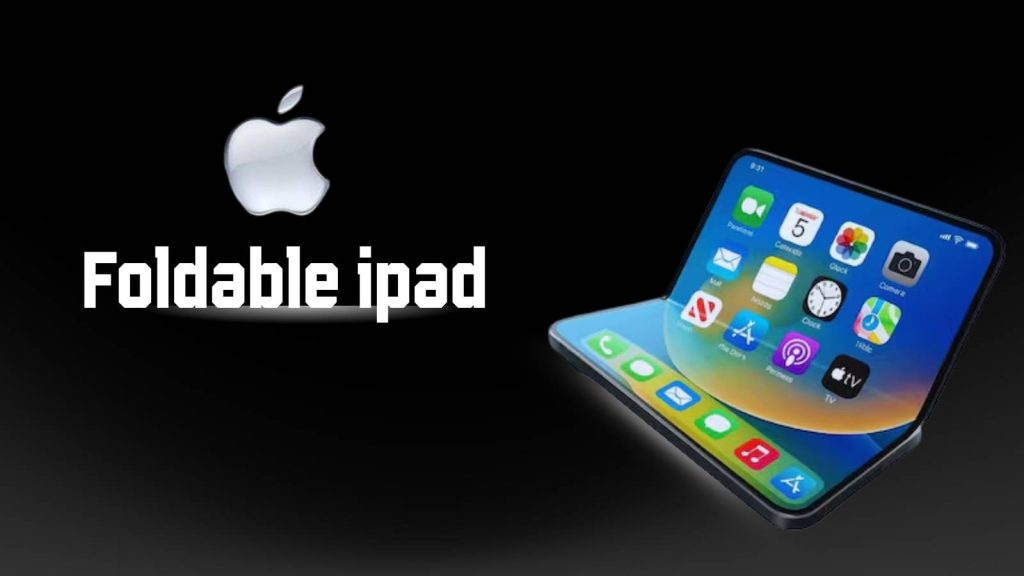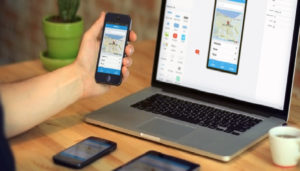Apple is reportedly working on an 18-inch foldable iPad, expected to launch in 2029 with a rumored $3,900 price tag. This ambitious device aims to combine the portability of a tablet with the large-screen productivity of a laptop, targeting creatives and professionals. While the concept excites many, challenges like hinge durability, screen creasing, and high production costs have delayed its release.
Find everything known so far about the Apple foldable iPad, from design and technical hurdles to pricing and potential market impact.
Current Status & Rumors: Timeline to 2029
Apple’s foldable iPad, internally codenamed J312, has reportedly faced significant development challenges, pushing its expected release to 2029 or later, instead of the initially targeted 2028 launch. The delays are mainly due to technical hurdles with the 18-inch OLED display, weight management, and the intricate hinge mechanism, which must meet Apple’s strict standards for durability and design.
Apple is said to be collaborating with Samsung Display for the foldable OLED panel. Both companies are working to minimize the screen crease, a common issue in foldable devices, while maintaining the premium build quality that Apple is known for.
Despite progress, some reports suggest that Apple may have paused development temporarily. According to Digitimes, the company is reassessing the project due to high production costs and concerns over potentially lower-than-expected market demand.
Design & Form Factor: What It Might Look Like
Leaks suggest that Apple’s foldable iPad will feature a highly deliberate and premium design. When closed, the device reportedly has aluminum panels on both sides, giving it a look more akin to a MacBook than a conventional tablet. Unlike some foldable smartphones, it does not include an external display when folded.
When opened, the device reveals a massive 18-inch OLED display, offering a screen area roughly equivalent to a 13-inch laptop. A major design challenge remains in minimizing the crease at the fold, which Apple is addressing through advanced materials and precision hinge engineering.
Prototypes reportedly weigh around 3.5 lbs (1.5–1.6 kg), heavier than current iPad Pro models and closer to the weight of a lightweight laptop. This weight is a key concern for Apple, as it could impact portability and the ease of holding the device like a traditional tablet.
Technical Challenges & Delays of Apple Foldable ipad
The Apple foldable iPad project faces several major engineering challenges that are contributing to delays.
1. High Display Costs: The 18-inch OLED panel is reported to cost Apple nearly three times more than the display used in a 13-inch iPad. This steep cost makes it difficult for Apple to meet more affordable price targets that may have been planned initially.
2. Weight Concerns: Prototypes reportedly weigh around 3.5 lbs (1.5–1.6 kg), which is heavy for a device designed to function as both a portable tablet and full-screen workstation. Engineers are working to reduce weight without compromising the strength and durability of the hinge or chassis.
3. Folding Mechanism & Screen Durability: Apple faces significant hurdles in minimizing the fold crease while ensuring that the OLED screen can endure years of repeated folding. Achieving this requires precision hinge engineering, advanced lamination techniques, and robust materials, all of which have contributed to the project’s delay.
4. Usability Considerations: Since the device lacks an external display, users must unfold it every time they want to use it. This design choice could impact convenience and quick usability, especially for short or on-the-go tasks.
Estimated Price & Positioning of Apple Foldable ipad
One of the most notable aspects of the Apple foldable iPad is its projected price, with several reports estimating it could cost up to $3,900. This is significantly higher than existing iPad models, but the pricing reflects the expensive 18-inch OLED display, custom hinge, and premium materials used in its construction.
Earlier rumors suggested a lower price target of around $3,000, but rising development costs have pushed the upper estimate closer to $3,900. If accurate, this would position the foldable iPad in a premium, ultra-luxury category, establishing it not just as a larger iPad, but as a distinct new product segment.
Apple’s pricing strategy appears aimed at creative professionals, designers, and high-end users who value both massive screen real estate and Apple’s signature build quality and polish. While the device may appeal to a niche audience, this segment is influential and likely willing to pay for cutting-edge technology and design innovation.
Apple Foldable ipad Competitors & Similar Devices
To gauge the potential market positioning of the Apple foldable iPad, it helps to consider comparable devices. The most frequently cited competitor is Huawei’s MateBook Fold, which also features an 18-inch foldable display and is priced at around $3,400.
Some foldable smartphones, the Apple foldable iPad does not include an external display, setting it apart from devices that attempt to combine a smartphone and a small tablet. This design choice signals Apple’s focus on a creative and productivity-first experience, positioning the device more as a portable creative studio than a conventional tablet.
Apple is competing not just on screen size, but on build quality, software integration, and design excellence. If executed successfully, the foldable iPad could redefine the premium large-screen device segment, moving beyond simply matching competitors to creating a new category of high-end foldable technology.
Software & Use‑Cases of Apple Foldable ipad
For a device as ambitious as the Apple foldable iPad, software will play a crucial role. While Apple has not officially confirmed details, rumors indicate the device could run a hybrid of iPadOS—optimized for touch-first interactions—and possibly macOS-like features for multitasking, window management, and more desktop-style workflows.
In practical terms, the 18-inch foldable screen could offer significant advantages for creatives. Illustrators, designers, and video editors could use the Apple Pencil on a large canvas for drawing, painting, or editing with unprecedented space. Professionals working on spreadsheets, documents, or presentations may benefit from multiple resizable windows, split-screen functionality, and full keyboard support. For students and productivity-focused users, the device could function as a large digital notebook, combining the portability of a tablet with the productivity potential of a laptop.
Due to its size, the foldable iPad could also serve as a mobile workstation, powerful enough to supplement or even replace a laptop for certain workflows. However, for typing-intensive tasks, users will likely need external accessories, such as a wireless keyboard or Apple’s proprietary keyboard attachment, given the absence of a built-in physical keyboard.
Apple Foldable ipad Market Risks & Adoption
Despite strong anticipation, the Apple foldable iPad faces significant development and market risks. On the development side, challenges such as the high cost of the 18-inch OLED panel, device weight, and hinge engineering remain substantial. If Apple cannot address these issues effectively, both performance and pricing could be adversely affected.
From a market perspective, there is uncertainty about whether enough consumers will pay between $3,000 and $3,900 for a foldable device. Even among power users, this price range is steep, which could limit the foldable iPad to a niche, high-end segment rather than achieving broad mass-market adoption.
There are concerns that Apple could pause or cancel the project entirely. Reports from Digitimes suggest development may be on hold due to manufacturing difficulties, high expenses, and potentially weak demand forecasts. This indicates that, even if functional prototypes exist, Apple may wait to proceed to mass production until both the economics and market demand justify the investment.
If Apple successfully ships this device in 2029, it could mark a new chapter for foldable computing — one where portability, performance, and design sophistication converge in a way no current device really does. But for now, much depends on whether Apple can crack the cost, weight, and hinge engineering that have repeatedly delayed this vision. The world will be watching closely.
FAQs
1. Is the Apple foldable iPad confirmed?
No, Apple has not officially confirmed the device yet. All available information comes from leaks, supply chain reports, and analyst predictions. While prototypes reportedly exist, Apple may still be evaluating feasibility, pricing, and market demand before making an official announcement.
2. Why is the launch delayed to 2029?
Rumored launch delay is attributed to multiple factors: the high cost of the 18-inch OLED display, engineering challenges with the foldable hinge, and the heavy weight of prototypes. Additionally, Apple may be reassessing market demand and overall production feasibility before committing to a public release.
3. Will it have under-display Face ID?
Yes, leaks indicate that the foldable iPad could feature under-display Face ID technology. This would allow Apple to maintain a seamless and uninterrupted large display while providing secure biometric authentication for users, aligning with Apple’s existing ecosystem of secure devices.
4. What kind of hinge will it use?
Apple is reportedly working on an advanced hinge system designed to withstand repeated folding without compromising durability. Materials like reinforced aluminum and carbon fiber are being tested to reduce screen creasing, maintain rigidity, and ensure long-term reliability, making it suitable for professional use.
5. How is battery life being managed?
Battery life is a significant concern due to the large 18-inch OLED screen. Apple is reportedly optimizing power efficiency through display driver improvements and energy-efficient hardware. Despite these efforts, heavy usage like multitasking, creative design work, or video editing may require frequent charging.
6. Will it be as thin as current iPads?
No, the foldable iPad is expected to be thicker and slightly heavier than current iPad models. The large screen, foldable hinge mechanism, and reinforced materials add bulk. While Apple will aim for portability, it will prioritize structural integrity and durability over ultra-thin design.
7. Which OS will it run?
The foldable iPad is likely to run an advanced version of iPadOS optimized for multitasking and split-screen functionality. Some reports suggest it may incorporate macOS-like features to fully leverage the large 18-inch screen, providing a hybrid experience suitable for both tablet and productivity workflows.
8. Is it durable?
Durability remains a key challenge. Apple is reportedly using high-quality materials and precise hinge engineering to ensure the device can withstand repeated folding and regular use. However, the long-term lifespan of the foldable OLED panel and hinge is still untested in real-world scenarios.
9. Will it support Apple Pencil and accessories?
Yes, the foldable iPad is expected to be fully compatible with Apple Pencil, making it ideal for designers, illustrators, and creative professionals. It is also likely to support external keyboards and other accessories to enhance productivity, turning the device into a versatile workstation.
10. Who is the foldable iPad aimed at?
This device appears to target a niche, high-end market. Its premium price and large form factor make it most suitable for professionals, creative users, and tech enthusiasts who require a large workspace on the go. It is unlikely to be positioned as a mass-market consumer tablet.




